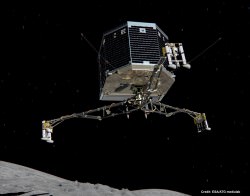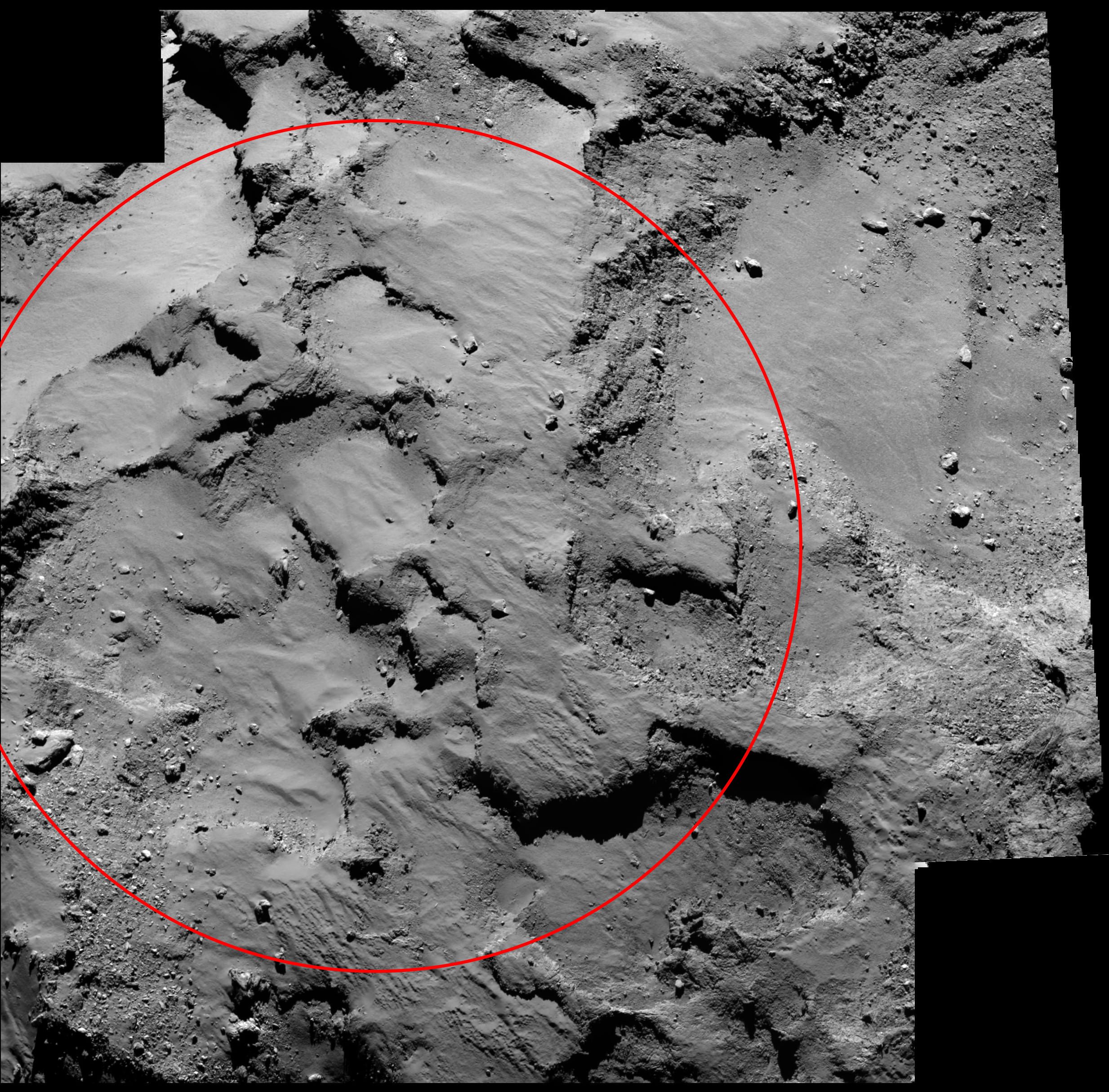The long-awaited deployment of the Philae lander, currently “piggybacked” aboard ESA’s Rosetta spacecraft orbiting the nucleus of Comet 67P/Churyumov-Gerasimenko, will occur in less than a month and we now have our best look yet at the area now green-lighted for touchdown. The picture above, made from two images acquired by Rosetta’s OSIRIS imaging instrument, shows a 500-meter circle centered on “Site J,” a spot on the comet’s “head” carefully chosen by mission scientists as the best place in which Philae should land, explore, and ultimately travel around the Sun for the rest of its days. And as of today, it’s a GO!
Site J was selected from among five other possible sites and was chosen because of the relative safety of its surface, its accessibility to consistent solar illumination, and the scientific and observational data it can make available to Philae’s suite of onboard instruments.
“None of the candidate landing sites met all of the operational criteria at the 100% level, but Site J is clearly the best solution,” said Stephan Ulamec, Philae Lander Manager at the DLR German Aerospace Center.

Read more: Comet’s Head Selected as Landing Site for Rosetta’s Historic Philae Lander
The mosaic above comprises two images taken by Rosetta’s OSIRIS (Optical, Spectroscopic, and Infrared Remote Imaging System) narrow-angle camera on Sept. 14 from a distance of about 30 km (18.6 miles). Image scale is 0.5 m/pixel.
As Comet 67P/CG continues toward perihelion its outgassing and sublimation jetting will undoubtedly increase, and Philae will be getting a front-row seat to the action.
“Site J is just 500-600 meters away from some pits and an area of comet outgassing activity,” said Holger Sierks, principal investigator for Rosetta’s OSIRIS camera from the Max Planck Institute for Solar System Research in Gottingen, Germany. “They will become more active as we get closer to the Sun.”
Watch “Landing on a Comet: the Trailer”
After completing a series of “Go/No-go” decisions by Rosetta’s flight dynamics team, Philae’s separation from Rosetta will occur on Nov. 12 at 08:35 GMT. It will land about seven hours later at around 15:30 GMT. Because of the distance to the comet and spacecraft — about 509 million km — confirmation of a successful touchdown won’t be received on Earth until 28 minutes and 20 seconds later. (And you thought Curiosity’s “seven minutes of terror” was nerve-wracking!)


This is all so great to see and read and think about… Congrats to all involved!